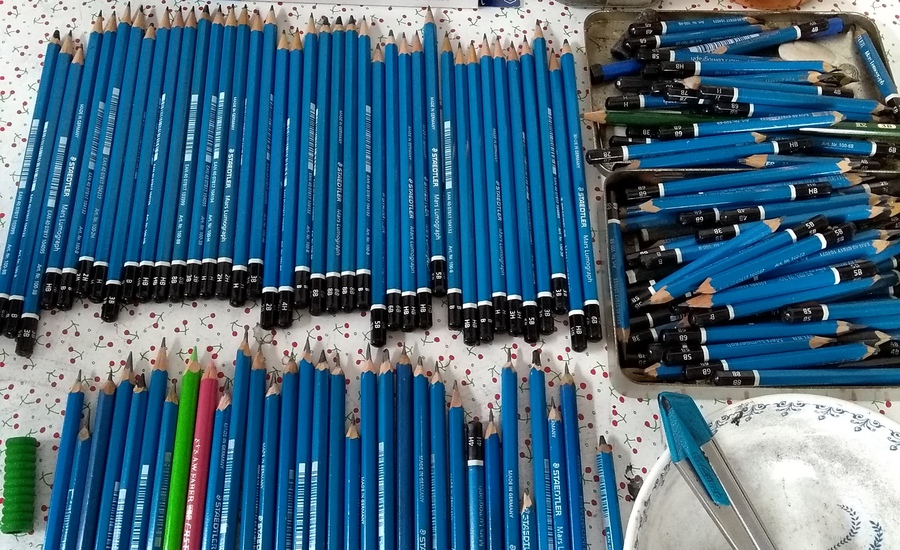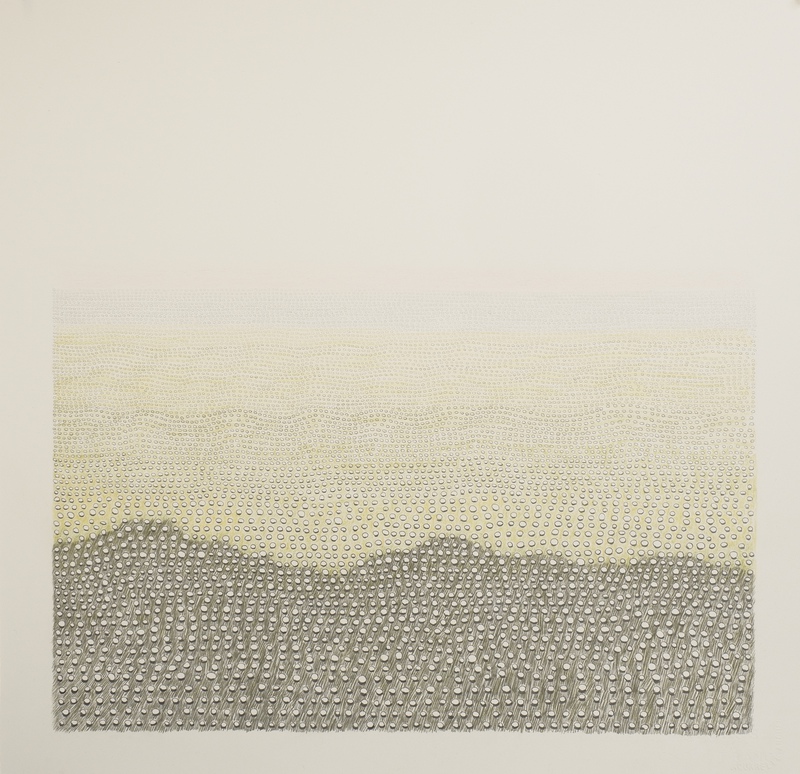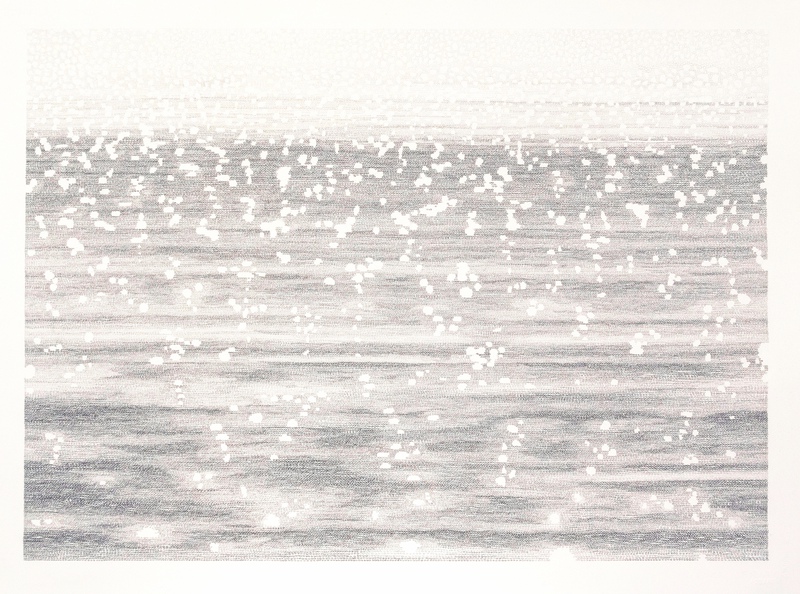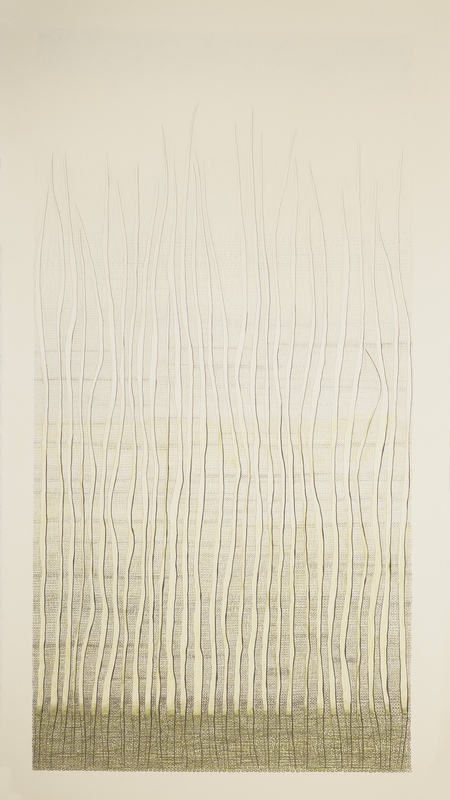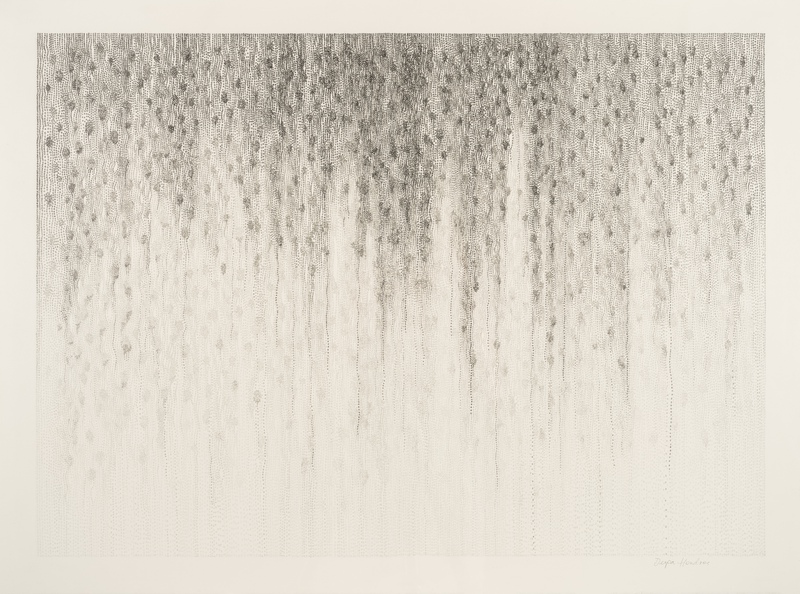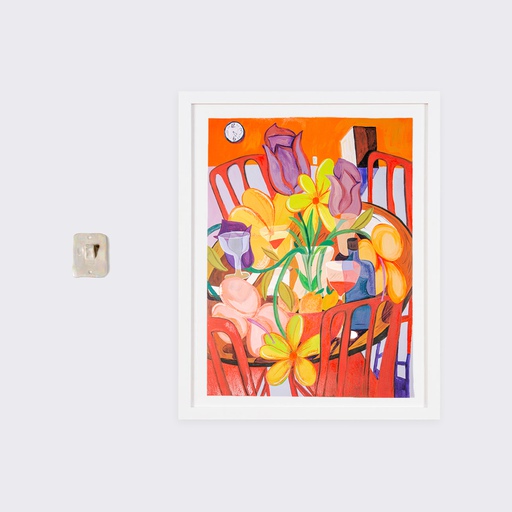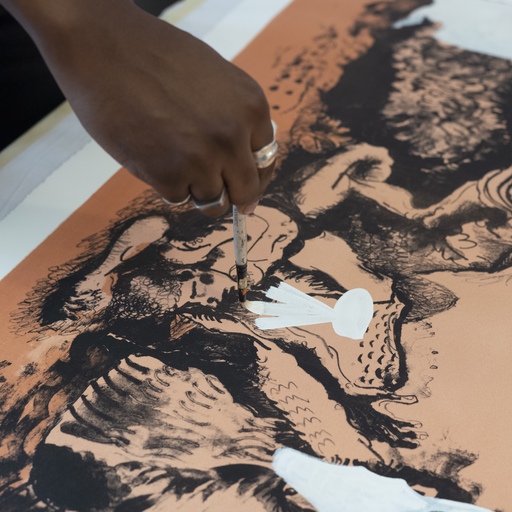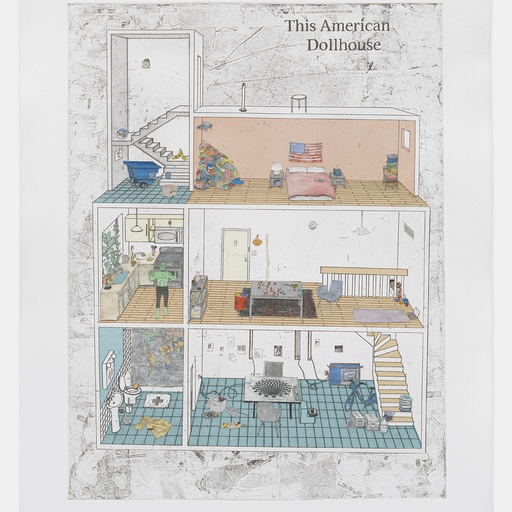When you view the work of Melbourne, Australia-based artist Despa Hondros from a distance, you may detect the sea, or rainfall or a landscape. However, as you draw closer, you’re rewarded with what Hondros calls “the madness of the process” - of seeing the intense detail and the way in which she executes it so exactingly. The effect is strangely calming, leaving many viewers with a deep feeling of peace they can’t always quite explain.
Hondros’s drawings invite the viewer to reflect on the boundless variation that exists in seemingly identical natural structures at a micro and macro level. Her obsessive desire to represent this subtle variation produces works that entice the viewer to closer examine the drawing and, in turn, be rewarded with the complexity of what it entails. In one completed image, over 50,000 tiny circles are individually drawn by Hondros in pencil, or in another, one continuous pencil line creates an image of infinite subtlety and density.
Hondros has shown her works in a number of exhibitions in Melbourne, Australia including No Vacancy Gallery; Flinders Lane Gallery; Gallerysmith; Brightspace Gallery and 45 Downstairs Gallery, among others. She was also finalist for a number of art prizes including The Hutchins Prize for Drawing, Tasmania; The Adelaide Perry Prize for Drawing, New South Wales; The National Works on Paper Art Prize, Victoria and The Waterhouse Natural Science Art Prize, South Australia.
She’s also a member of Artspace’s Artist Direct program which offers affordable unique artworks to you the buyer straight from the artist’s studio. We chatted to her about people’s reactions to her work, what it's actually like to draw tens of thousands of tiny circles, and perhaps not surprisingly, the importance of keeping pencils sharp at all times.
Despa Hondros in her studio
How would you describe your work to someone who's never seen it? I construct images by drawing tens of thousands of tiny circles in pencil on paper, using natural forms as inspiration for my work. The images are abstract, subtle and minimal, but are also intensely detailed. My process is about repetition, precision and control. Seeing my work will leave you with a sense of quiet, meditative stillness, of contemplation and tranquillity, all of which I experience when I'm working on each piece.
What do you think about when you're creating? Because my process is about detail, repetition and precision, and I'm totally immersed in it and absorbed by it, I find I'm not thinking too much about anything other than what's in front of me and how the image is evolving. I'm constantly making decisions about movement and tone, and the intensity of this doesn't allow my mind to drift too much, and if it does, I very easily lose momentum and need to focus again. It's sometimes difficult to shut out thoughts of personal issues or life-problems, but because I'm so excited by the piece I'm working on I find I'm often thinking and planning my next drawing, which helps keep me focused and works as a distraction from everything that's going on outside my studio. I do also listen to podcasts or music, and because of the meditative nature of my work, I find hours have gone by and I've hardly noticed.
DESPA HONDROS - Untitled (Green), 2022
Where do your titles come from? Depending on the theme I'm working on at the time, I choose a title when I'm about halfway through the piece. Sometimes a title will come to me at the beginning and it's easy, it pops into my head and there it is, that's it. I don't always title my work. Sometimes a title isn't needed, or if I have to think about one too much, then I think it definitely doesn't need one. It's also interesting to me to see what the viewer sees in my work, and I love that they can see or feel or experience something in it that I haven't.
DESPA HONDROS - Glittering Sea, 2022
Can you control where the process takes you?
With this current body of work I can easily control where I'm going because it's so detailed and the process is so slow, I have time to work out where it's heading and what I want to do with it. Having said that, in another way, the nature of the process can take me somewhere else completely before I've realised it, and that's OK, I'm happy for that to happen because spontaneity can be exciting, and I don't really like everything to be so planned out that I must stick to a particular formula or pattern or design. If I start a drawing based on rainfall for example, I may reference a photograph I've taken, and that's all I've got, the rest comes out of my head because when you look at rain falling in the distance all you can see are subtle, ephemeral curtain-like formations, and the piece develops on its own as I draw tens of thousands of tiny circles, changing pencils to create different tonal values that create the shading effect of the curtains you see. This is basically the same process for all my current work, regardless of the topic.
DESPA HONDROS - Heathcote Trees, 2022
Can you describe a typical working day? My studio is in a warehouse conversion with 17 other artists. It's walking distance from my home so on a typical day I walk to my studio at around 9 - 9:30am, and I'm there until 4pm. I never start working immediately - I like to study yesterday's work, sharpen all my pencils, have a quick chat with one of my studio friends, then get started. Because my work is so detailed and intense in its execution, I will often take breaks to give my body a rest but also to assess what I've just done and where and how the image is going. I always take a break for lunch when I read some news and play Wordle and other word puzzles – I love word puzzles. Depending on how my work is progressing, each day can be fairly much the same. However when I'm not travelling so well with it, my day can change quite a bit where I'll be in my studio tidying up, rearranging things, staring blankly at the current work in progress on my easel, scrolling endlessly through Instagram and allowing anything and everything to distract me from my work – these are the days I do not enjoy, but seem to be a necessary part of the overall process. This will last one or two days, then I'm back and everything's ok again.
DESPA HONDROS - Raining Circles, over 100,000 of them, 2020
What made you want to be an artist?
From an early age like most kids, I was always drawing and painting and making things. But as I grew older, it became apparent that I was very good at it, especially drawing. I don't know why I wanted to become an artist as I didn't come from a creative background by any means, and when I left school, I wasn't fortunate enough to have the family support or encouragement I needed to study art full time and instead followed a career in health for a short time. I meanwhile studied drawing at night school and became increasingly obsessed with it and that yearning desire to become a practising artist grew stronger and so at the age of 27, I put myself through art school working part time jobs to support myself. It has always been a financial struggle, but somehow, I achieved my dream and here I am now.
What should people look for in your art and what do you hope they get out of it? When my work is viewed from a distance, and in person, it may resemble the sea, or rainfall or a landscape, but as the work is looked at more closely the viewer is rewarded with the madness of the process - of seeing the intense detail and the way that detail is executed. It's also interesting and thrilling to witness people's reaction to my work upon viewing it in real life - a totally different experience to seeing them in digital format. And based on the feedback I have received both in person and in writing from people, it's always about how calming and at peace they feel with my work, and how in awe they are of the process and my dedication to that process of infinite repetition and detailed precision, of pushing boundaries and the originality of a style and method that's quite unique.
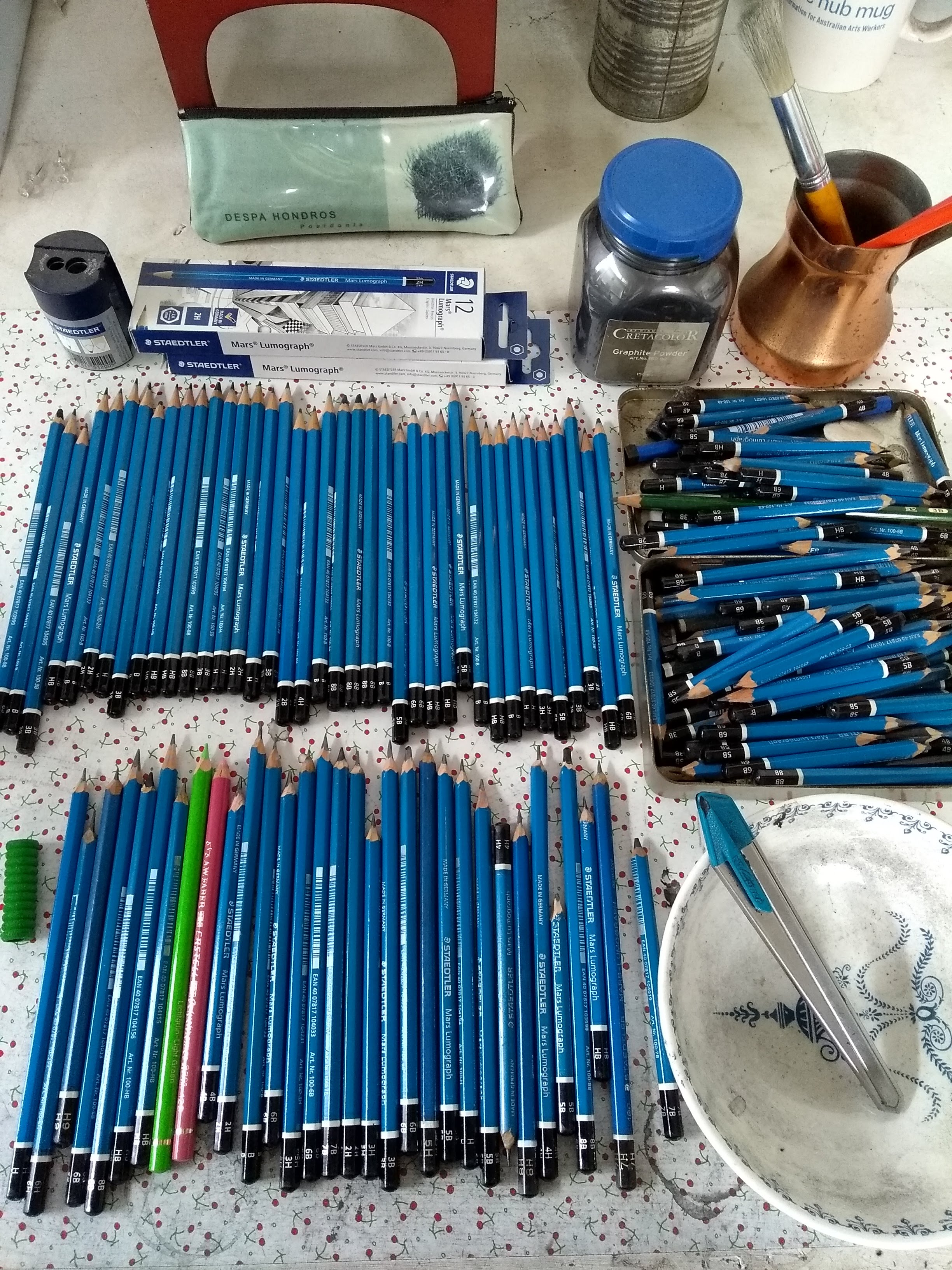
How has your work changed over your career? I majored in sculpture and drawing at art school, and drawing has been central to my practice ever since. Learning and understanding the principles of perspective, and of how light and dark work on a surface allowed me to go in any direction. For a long time I was painting urban landscapes, making a comment on how modern urbanisation was destroying the history of the small city I grew up in. There was also something about bridges that I loved which featured a lot in my work at the time. After 15 or so years of this I had reached a point where I needed to change direction. I decided that I wanted to push the boundaries of drawing by using minimal materials to create an image. I eliminated colour completely from my palette, leaving only paper and pencil to work with. I decided to see what I could create with pencil, paper and the simplest of marks being either a straight line, one continuous line or the 'circle'. I experimented extensively making small studies of drawings using the circle as my motif. It was fascinating and exciting to see where this was taking me and that's how I ended up where I am now.
DESPA HONDROS - Sea-Thru-Trees, 2020
What are you working on at the moment ? I'm currently working on ideas for a new body of work which will see me returning to painting as my main practice. I don't know where it's going to take me but it's kind of exciting not knowing what's going to happen. My new work will be abstract with references to an underlying subject. It doesn't seem to matter which medium I use because the work often ends up being totally different to any preconceived idea, which is both exciting and unsettling. And that's OK - that's how I work - the subject is the starter, and the rest comes from within. I'm looking forward to delving deeper into my psyche and seeing where I end up.
See more work by Despa Hondros on her Artspace artist page here.











